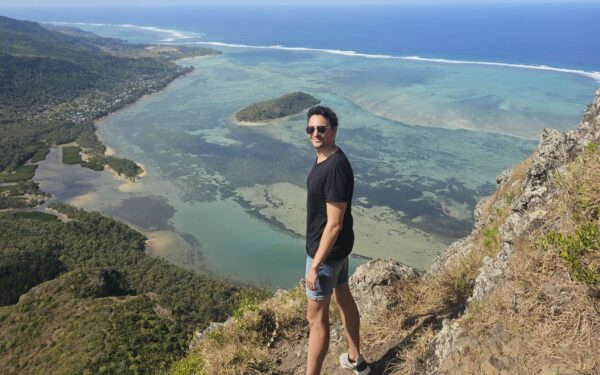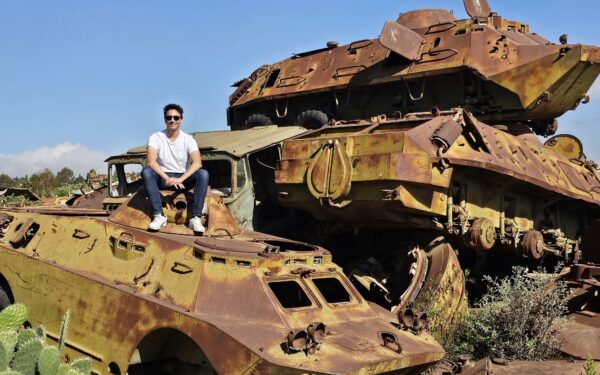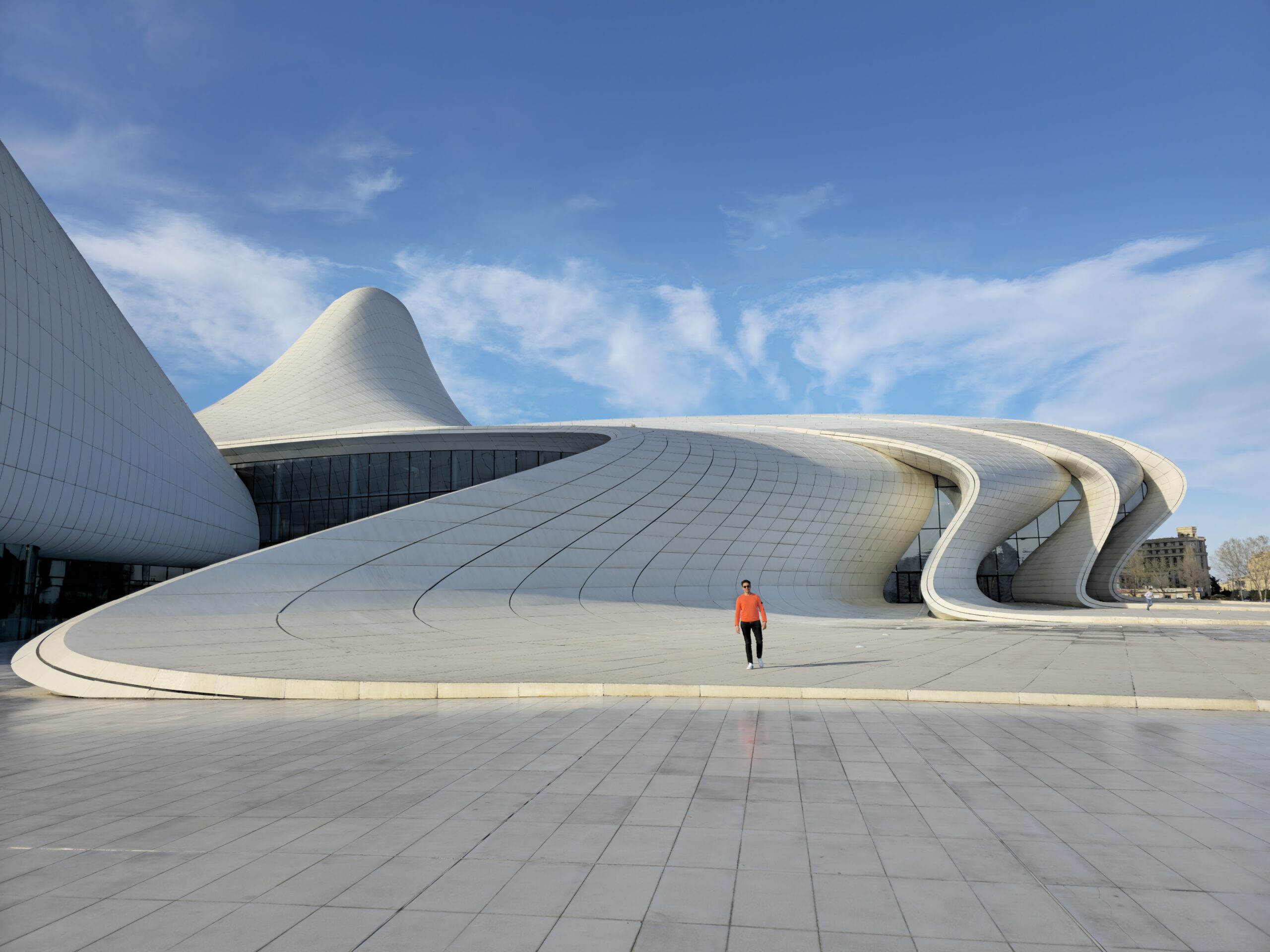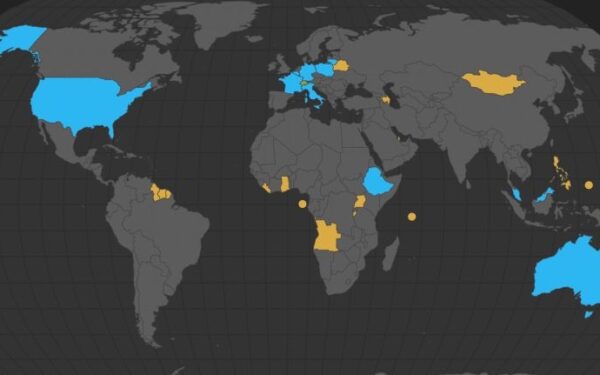If someone asks me what’s the coolest thing I’ve ever seen while traveling, the Danakil Depression in Ethiopia is the first thing that comes to my mind. This surreal place is simply unique and excited me in every aspect.
In 2017, I traveled three days and two nights through this geological depression near the border between Ethiopia and Eritrea. Although I have seen amazing things there, it was actually a quite challenging trip. There is a reason for the Danakil Depression’s title as the most inhospitable place on earth. It is hot, it is dry, and yes, it can be dangerous.
But hey, traveling the Danakil Depression is a real adventure and for many a once in a lifetime experience. To help other travelers, I thus try to answer all relevant questions about the Danakil Depression in this article. Is there no answer to your question? Then post it as a comment at the end of this article.
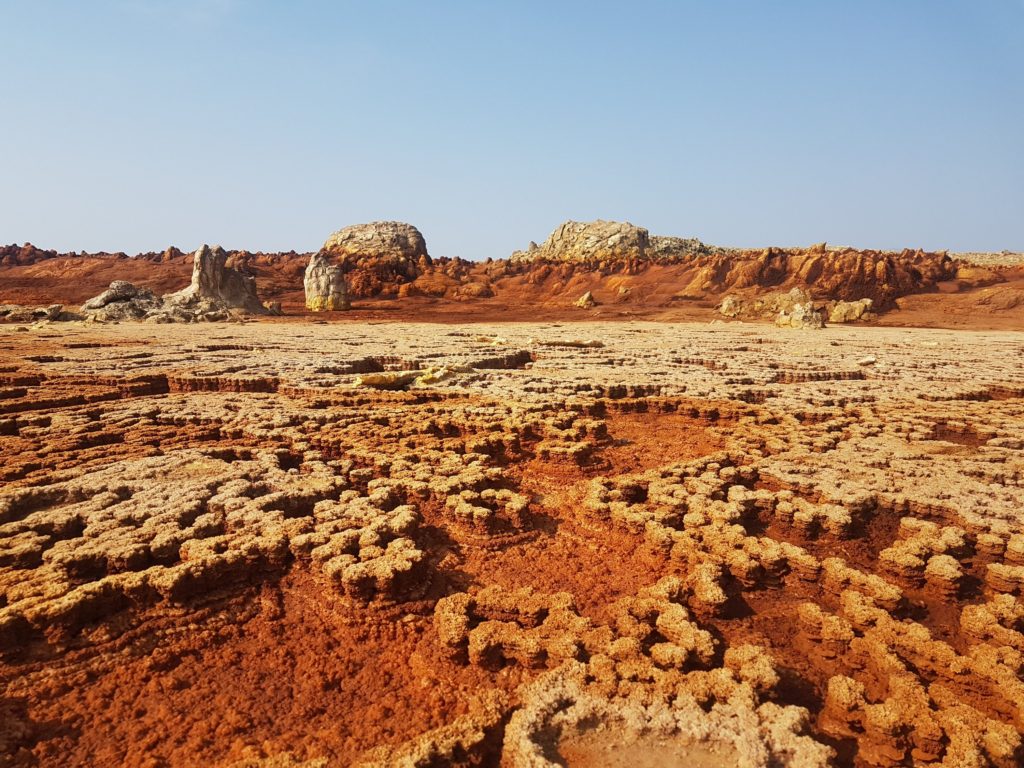
What to expect in the Danakil Depression
The landscapes in the Danakil Depression are like from another world. In a science fiction movie one would probably picture Mars like this. The Danakil Depression is unique and definitely one of the coolest places to visit. Cool might be the wrong word though, because the Danakil Depression is the hottest inhabited place on Earth.
It was 45 degrees during the day and maybe 35 degrees at night when I went there. That was in October. In other months, temperatures can be well over 50°C during the day. Therefore, traveling to the Danakil Depression should be done between October and February.
Don’t let the hot temperatures intimidate you, because you will be rewarded with incredible scenery. The most surreal landscape is certainly the colorful geothermal area called Dallol. Here you have to be careful not to step into the bubbling sulphur lakes, as the acid in them is corrosive and can cause serious injuries.
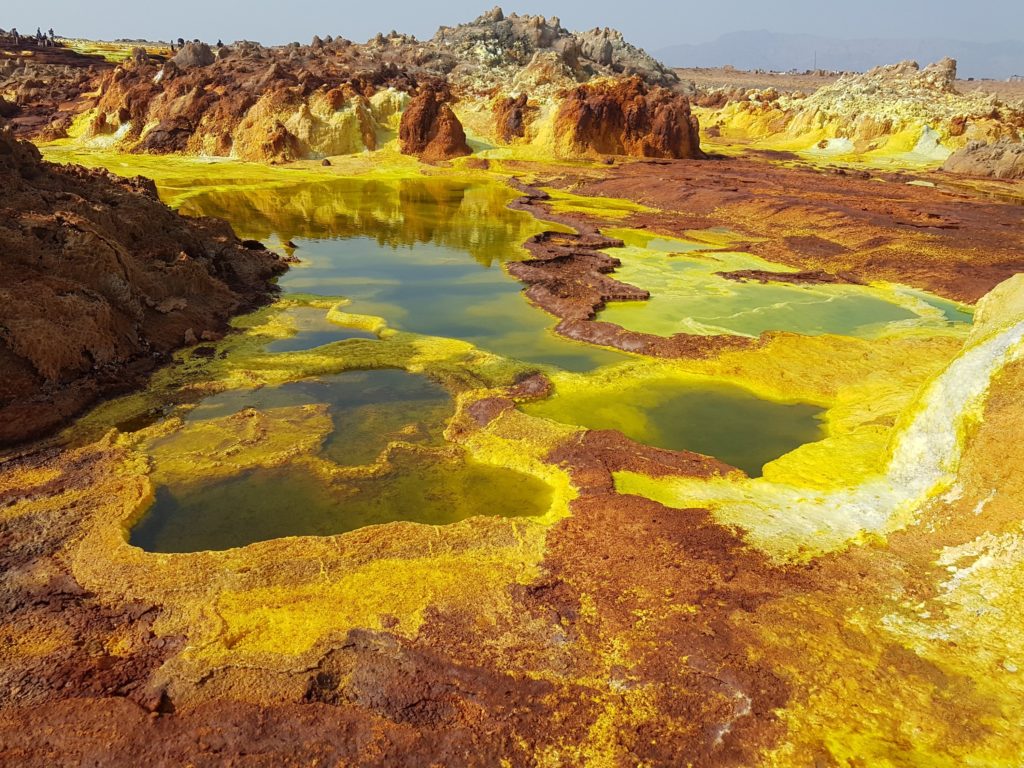
Furthermore, at night (when temperatures are “only” at 35 degrees) you climb the Erta Ale volcano and sleep 200m next to the crater in the open air. It is one of the few active volcanoes in the world where you can admire the flowing lava from the rim.
Getting there is not so easy but doable. Although the ascent is not steep, the hike is tough because of the temperatures. But it is absolutely worth it! The view above is mind-blowing and once you’re up there, you’ve already forgotten the tedious march.
Another attraction is Lake Assale, a salt lake that is reminiscent of the Salar de Uyuni in Bolivia. The water surface of Lake Assale is only about half a centimeter high. But you will also visit Lake Afrera, another salt lake in which you can swim and drift on the water surface similar to the Dead Sea. The Danakil is one of the lowest points on Earth. It is 125m below sea level. As a consequence, many waters have a incredibly high salt concentration.
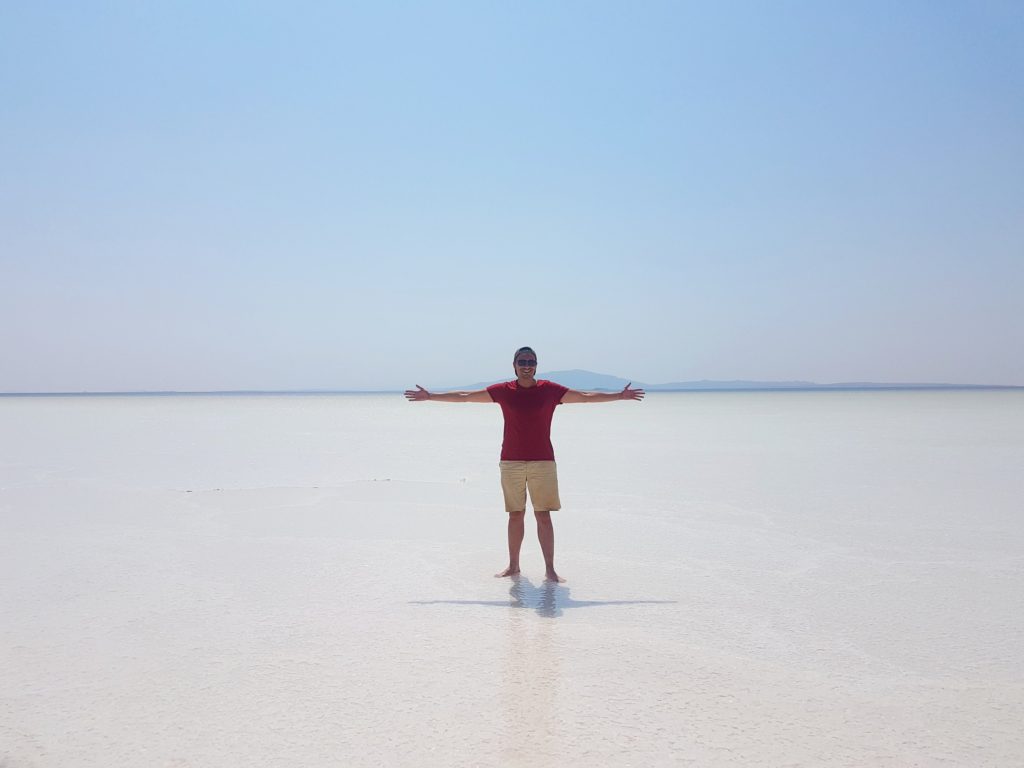
How to get there
First, it is not possible to visit the Danakil Depression on your own. You have to join a tour.
There are plenty of tour operators, and the tours start from Mek’ele, Ethiopia’s second biggest city. You can get to Mek’ele either by bus or by plane. However, I would advise you to take the plane to avoid a long overland trip.
Although all tours can be booked online, I recommend booking the tour directly in Ethiopia. This will save you 100 dollars or more. The tours start every day. This means that you can walk to the office of the tour operator at 5pm and start the tour the next morning.
My tour operator was ETT, probably the best known and also the cheapest. I can’t evaluate the other tour providers, but I try to describe where the advantages and disadvantages of ETT are.
ETT is as already mentioned the cheapest operator. But the groups are relatively large. Our group consisted of about 16 people. I did not mind that group size, but if you want this experience to be exclusive, you might want to google a provider that specializes in smaller groups. During the Danakil tour we came across a few groups of 4-5 travelers.
ETT led also the tours, in which two fatal incidents happened. More about this later in this article.
How many days should I go?
The standard duration for the Danakil tours is two, three or four days.
One thing I can say in advance: in my opinion, two-day trips are pointless, because the journey between Mek’ele and Danakil already takes half a day. With a two-day tour you also can’t see everything there. In the case of the Danakil that would be a pity, because there was no single highlight that really stood out for me. All the things I saw there were just wow.
Our itinerary looked like this:
Day 1: Transfer from Mek’ele to the Danakil Depression. In the evening: Ascent to the Erta Ale volcano. Overnight near the crater.
Day 2: Descent from Erta Ale, Lake Afrera in the afternoon.
Day 3: Dallol, Lake Assale, salt pans and camel caravans, transfer to Mek’ele
The first day was a long journey. On our way to the desert, we also had to get our mandatory military permits. This procedure lasted at least one hour. So, we left Mek’ele between 9 or 10am and arrived at the basecamp at 6pm. Of course, we also had several breaks. The real program started at 8pm when we started the Erta Ale hike.
Day two was more or less a day in the car. We descended the volcano in the early morning and drove to Lake Afrera afterwards, where we arrived in the afternoon. To swim in the salt lake with our clothes on was really refreshing.
The third day was the most action-packed. We visited several interesting places such as Dallol or Lake Assale. The pace of that day was a bit fast but still okay. We returned to Mek’ele at 6pm.
If you take the two-day tour, you have to choose between Erta Ale or Dallol/the salt lakes. You can’t visit both then.
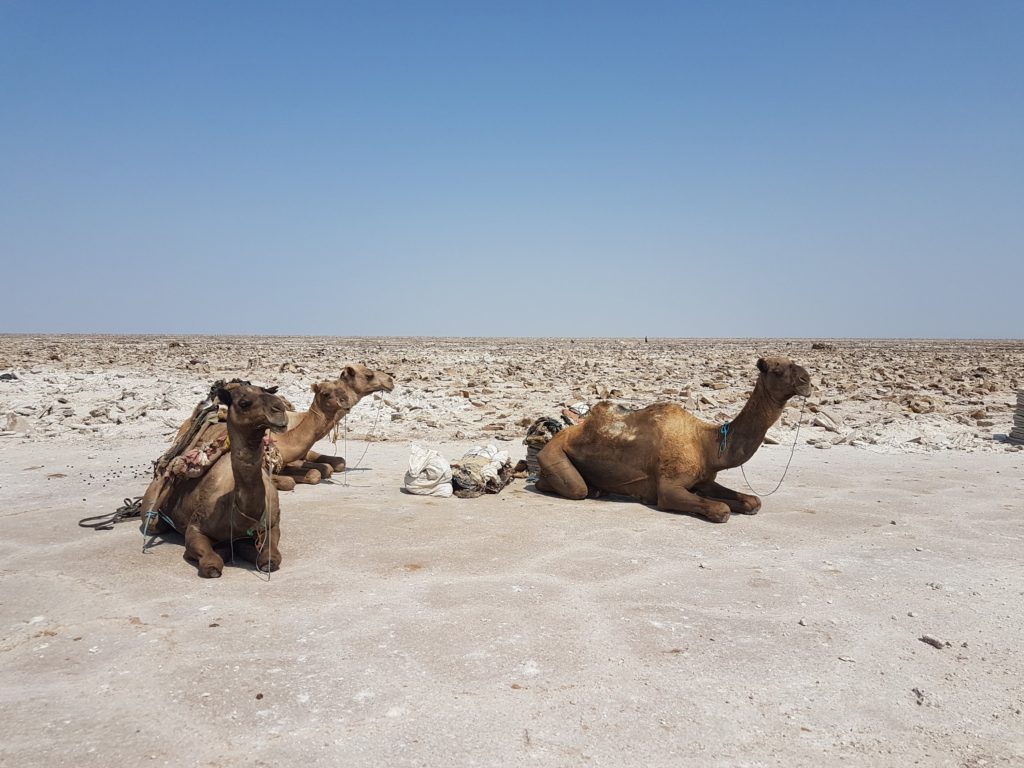
I’ve met people who’ve chosen a four-day tour. They told me that they had the same program as us. The difference was that they had spent a little more time in each place. Do I think that we traveled too fast? I would answer that question with a clear “no”. Or in other words: I would recommend the three-day tour.
Be aware that you spend a large part of your time in the car during this trip. Not only do the transfers to and from Mek’ele take a long time, but the trip from Erta Ale to Dallol also takes almost a day. However, the air-conditioned car is more pleasant than standing under the glowing sun anyway.
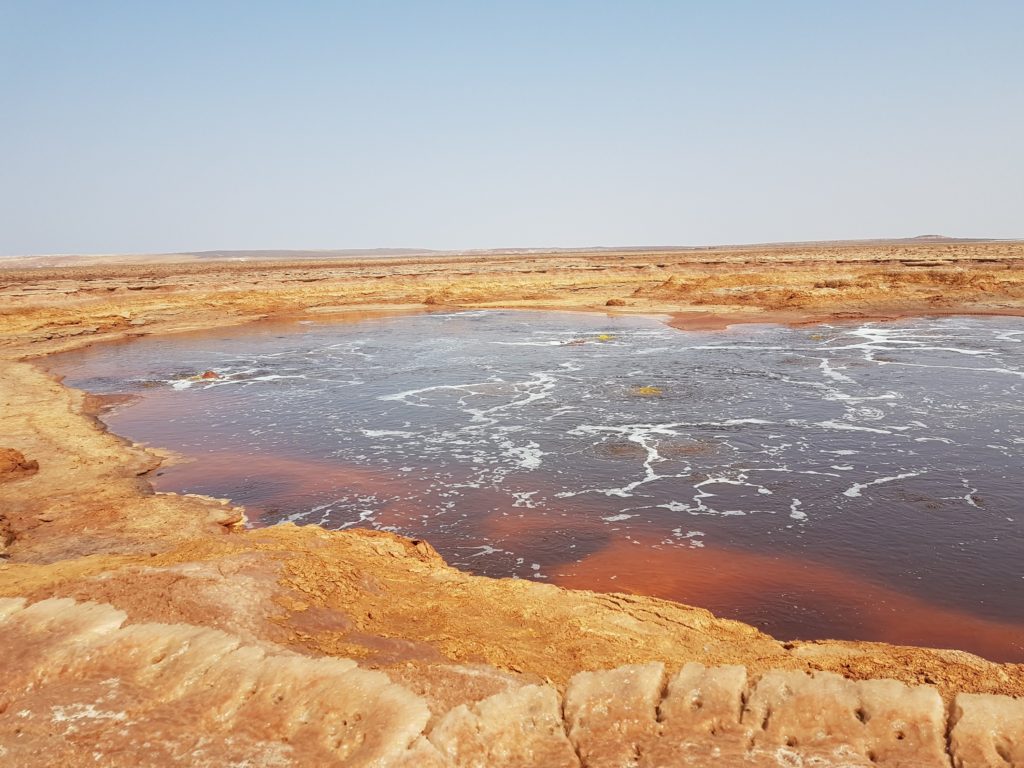
How much does traveling to the Danakil cost?
If you look at the otherwise very cheap prices in Ethiopia, the Danakil Depression is expensive. Or at least the most expensive tour you can do in the country.
Three-day tours cost between $250-500 depending on the tour operator and your negotiating skills, but most tourists pay between $300-400. I paid $275 thanks to the guy, who arranged the Simien Mountains tour for me.
I heard about travelers who skipped the Danakil tour because of the cost. This is a pity. You should keep in mind that this is a multi-day tour and the costs per day are not so high anymore. After all, you don’t pay for transport, accommodation or food.
Other things to bear in mind
Accommodation during the trip is very basic. Besides sleeping on a mattress near the crater of Erta Ale we slept one night in a simply stone house. Also there was basically a mattress and we were about 10 people in one room. However, we were so exhausted from the day that at 9 pm the light was out and everybody was sleeping.
The food is relatively basic too, but has always tasted excellent. Besides, don’t count on having electricity. Only in the second night we had the possibility to charge our mobile phones in the accommodation. Anyway, take a portable charger with you!
Be aware that you cannot take a shower during the whole tour. The only shower is when one of the tour guides pours a few liters of water over your body. Besides, you don’t have too often the opportunity to go to the toilet. Nature is your friend in this case…
Last but not least… is the Danakil Depression safe?
In principle, yes. However, the Danakil is associated with certain risks.
The Danakil Depression lies in the border area between Ethiopia and Erirtea, which has been a crisis area for decades. Shortly after my visit, a tourist had been shot dead near Erta Ale volcano. The tourist and his guide were traveling alone and unfortunately got into an exchange of fire between Ethiopians and Eritreans.
However, this risk has been reduced or even eliminated, as the two countries are no longer fighting each other. After decades of war between Ethiopia and Eritrea, the government of the two countries signed a peace agreement in 2018 and the border between the two countries is open again.
In 2019, another tragic accident happened in the Danakil. A tourist from Israel went missing during a hike and her body was found afterwards. She probably fell to her death.
These are individual cases, but it is not for nothing that the Danakil is called the most inhospitable place on earth. The conditions are extreme and unfortunately I have to say that ETT’s safety precautions have not always been the best.
At Erta Ale volcano we were about 40 people (from several travel groups), but there were only two guides. On the way from our camp to the crater at midnight they advised that we should only step where the guides do. With this group size and the fact that it was pitch dark, this requirement didn’t work out at all. Moreover, the ground at the rim of the volcano is anything but solid and I wouldn’t be surprised to read someday that someone fell into the volcano.
That shouldn’t make anyone insecure, though. I appeal here simply to the common sense. That means don’t do stupid things like e.g. to move away from the group in the desert or to be careless at the volcano crater. Don’t have the wrong impression that under the supervision of the guides nothing can happen anyway.
Those who use common sense are ultimately rewarded with some of the most spectacular things that can be seen on Earth.
Wanna read more about my trip to Ethiopia? Check out this article then.
